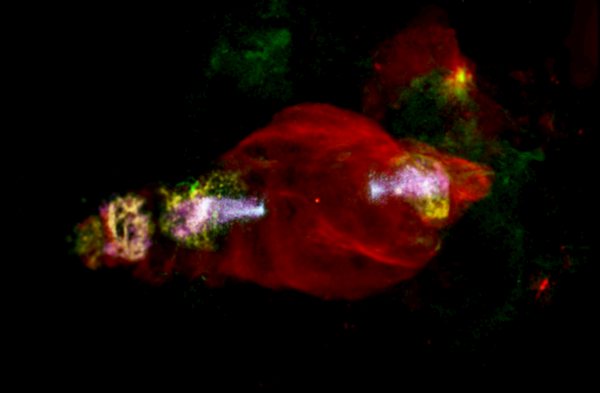The Manatee Nebula is seen swimming through space in this multilayered image recently released by the European Space Agency (ESA).
According to an ESA release, the nebula is thought to be a supernova remnant, created when a giant star violently exploded some 30,000 years ago, which left behind a central black hole surrounded by a beautifully expanding cloud of gas.
The Very Large Array in New Mexico captured the radio data (red) that makes up the bulk of the sea cow’s shape, while Skinakas Observatory in Greece obtained the optical data (green), which resembles seaweed floating near the cosmic creature. The vibrant hues decorating the Manatee’s ‘head’ (left) and ‘tail’ (right) represent varying intensities of X-rays — namely, soft X-rays (yellow), medium X-rays (magenta), and hard X-rays (cyan). This X-ray data was captured by ESA’s XMM-Newton space observatory.
These bright colors also serve to reveal the jets of high-energy particles that are being shot outward by the nebula’s central black hole, a microquasar known as SS 433 (red dot at center). These jets, which extend out hundreds of light-years, are packed with particles moving at some 25 percent the speed of light, allowing them to easily punch through the remnant’s gassy shells.
“We believe the particles are getting accelerated to very high energies in the head of the Manatee through an unusually energetic particle acceleration process,” Samar Safi-Harb of the University of Manitoba, Canada, who led the recent study posted on arXiv.org, said in the release. “The black hole outflow likely made its way there and has been re-energized to high-energy radiation at that location, perhaps due to shock waves in the expanding gas clouds and enhanced magnetic fields.”
Moving forward, Safi-Harb hopes to continue studying this intriguing cosmic creature to firmly pin down exactly what gives the Manatee its many unconventional qualities.










